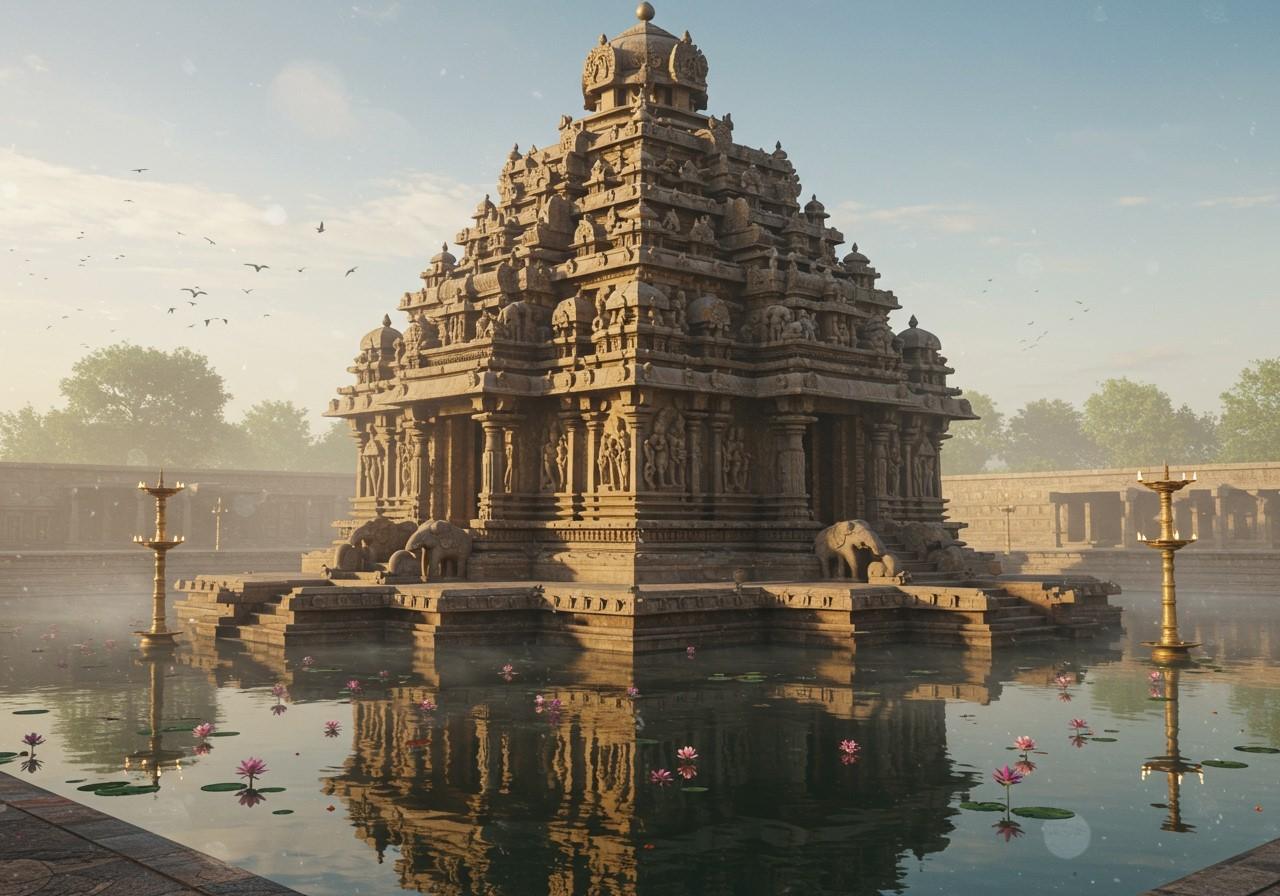
The Arasikere Ishvara Temple stands as a testament to the architectural ingenuity of the Hoysala Empire. Located in the peaceful town of Arasikere, Karnataka, this temple, dedicated to Lord Shiva, seamlessly blends spirituality, history, and artistic brilliance. Its intricate carvings and unique structural design offer a captivating glimpse into India’s rich cultural heritage, making it a must-visit for devotees and history enthusiasts alike.
A Journey Through Time: Historical Background
The Arasikere Ishvara Temple’s history dates back to 1220 AD, during the flourishing Hoysala Empire. King Narasimha II played a key role in its construction, contributing to the architectural advancements that marked this era. The temple has served as a vibrant center for spiritual and cultural activities for centuries, enduring the passage of time and the influences of subsequent dynasties. This rich history underscores its significance in preserving regional traditions.
Architectural Splendor: A Hallmark of Hoysala Style
The temple’s architecture exemplifies the distinctive Hoysala style. Its 16-pointed star-shaped mantapa (hall) and irregularly shaped shrine, constructed of soapstone, are unique features. The ekakuta shrine (single shrine) faces east, featuring both open and closed mantapas. Intricate carvings adorn the temple, depicting deities, dancers, and mythical figures. The prominent shikhara, or tower, is a defining characteristic of Hoysala architecture, further showcasing the artistic brilliance of the era.
Cultural and Religious Significance: A Living Tradition
The Arasikere Ishvara Temple remains a vital hub for religious and cultural practices. It holds deep spiritual meaning for devotees of Lord Shiva, especially during festivals such as Maha Shivaratri. This sacred space serves as a focal point for community engagement, preserving and celebrating the rich tapestry of Hindu traditions passed down through generations from the Hoysala period. The temple’s enduring presence reflects its continued importance in the cultural landscape of the region.
The Visitor Experience: A Journey of Discovery
Visitors to the Arasikere Ishvara Temple often remark on its tranquil and spiritual atmosphere. The serene setting offers a respite from the hustle and bustle of daily life, allowing for quiet contemplation and reflection. Information about visiting hours and accommodation options is readily available to enhance the visitor experience. Ongoing efforts to improve accessibility aim to ensure a comfortable and welcoming environment for all. The architectural intricacies of the temple, set against a picturesque backdrop, provide ample opportunities for photography.
Preservation for Posterity: Safeguarding a Legacy
Preserving the Arasikere Ishvara Temple is paramount to ensuring its legacy for future generations. Collaborative efforts between government bodies, NGOs, and local communities focus on maintaining the structural integrity of this historical treasure. Addressing the challenges posed by environmental factors is crucial to its long-term survival. Community involvement fosters a sense of shared responsibility and pride, striking a balance between facilitating tourism and safeguarding the sanctity of the temple.
Other Hoysala Gems in the Vicinity
- Lakshminarasimha Temple, Haranhalli: Located 39 km from Hassan in Arsikere taluk, this trikuta (three-shrined) temple, built in 1235 AD by King Vira Someshwara, places significant emphasis on the central shrine. Its elaborate carvings and architectural details reflect the Hoysala artistic style.
- Sadashiva Temple, Haranhalli: Just a short distance from the Lakshminarasimha Temple, this temple, also built by King Vira Someshwara in 1235 AD, offers another glimpse into the architectural prowess of the Hoysala period. Its proximity to the Lakshminarasimha Temple makes it a convenient addition to any historical exploration of the region.
- Chennakesava Temple, Anekere: Located about 6.5 km from Channarayapatna Taluk, this temple, constructed around 1119 AD, showcases a blend of historical architecture and recent renovation efforts by the Hoysala Kings. Its preserved beauty is a sight to behold.
- Lakshmi Devi Temple, Doddagaddavalli: Constructed in 1114 CE under the rule of King Vishnuvardhana, this temple, located about 16 km from Hassan, stands as one of the earliest examples of Hoysala architecture. This structure provides valuable insights into the early development of this distinctive architectural style.
Honoring Tradition with Poojn.in
Poojn.in, India’s leading online store for cultural and religious goods, provides a wide selection of items perfect for honoring the traditions of the Arasikere Ishvara Temple. Whether you seek a beautiful Lord Shiva marble murti, traditional puja items, or sacred offerings, Poojn.in has you covered. Shop now and bring the sanctity of the temple into your home.
Conclusion: A Timeless Legacy
The Arasikere Ishvara Temple is more than just a structure; it’s a living testament to India’s rich heritage, a bridge connecting the past with the present. Its architectural grandeur, historical depth, and spiritual significance make it a destination of profound cultural importance. By visiting this temple and supporting its preservation, you contribute to ensuring that its timeless beauty and traditions continue to inspire and enrich generations to come.


